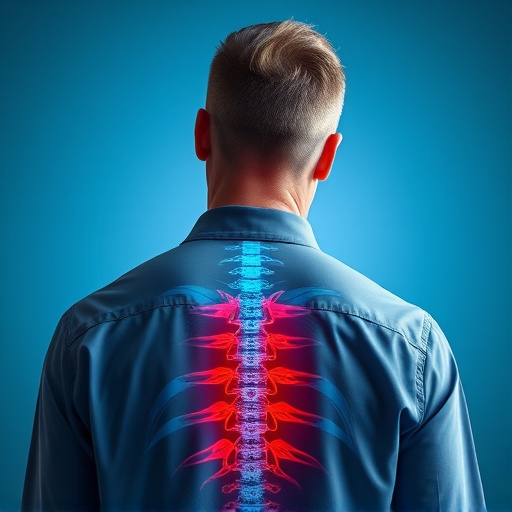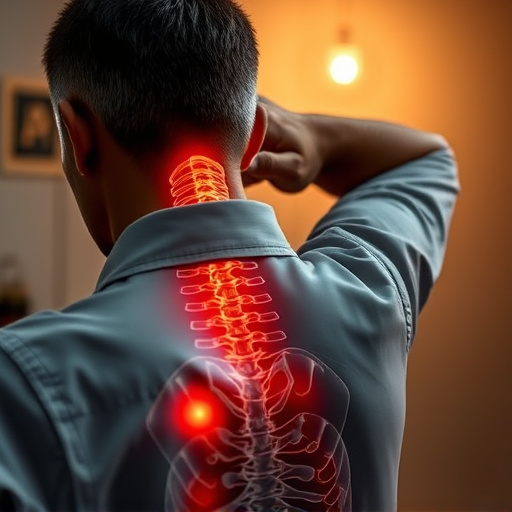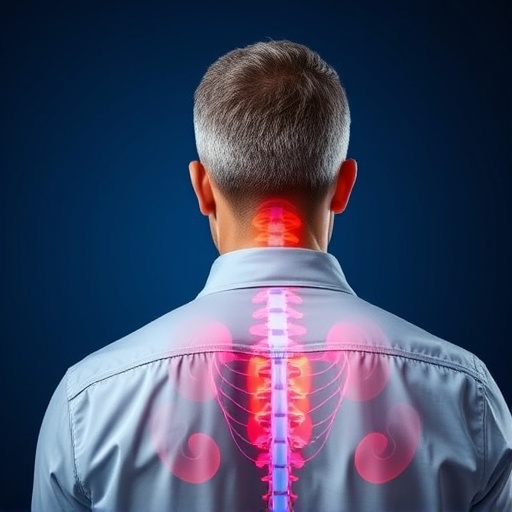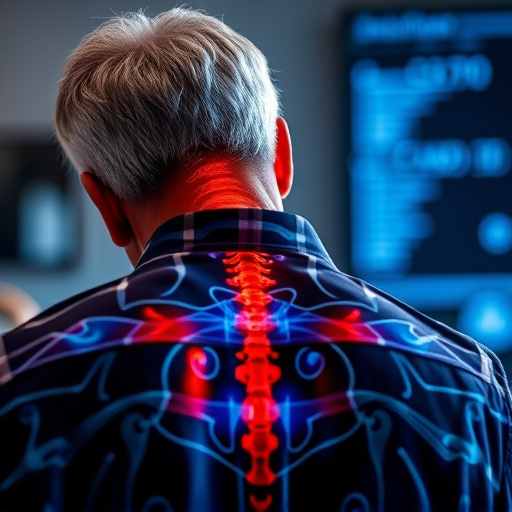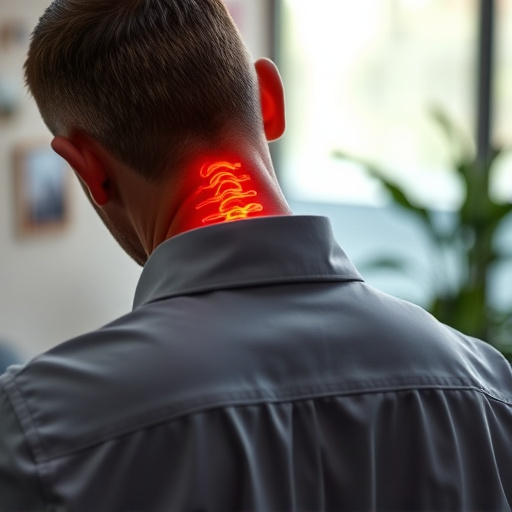Rehabilitation exercises and Therapeutic Movement Therapy (TMT) are revolutionary approaches in workers' compensation injury care, prioritizing a holistic recovery process. Customized programs combine stretching, strengthening, balance training, and functional movement to restore mobility, strength, and flexibility. Qualified therapists guide patients through this tailored process, addressing physical, emotional, and mental aspects of an injury for comprehensive healing. TMT techniques like yoga and Pilates enhance flexibility, reduce pain, and improve overall well-being, ultimately enabling individuals to return to work and daily activities with enhanced confidence and reduced risk of future injuries.
Rehabilitation exercises and therapeutic movement therapy play a pivotal role in workers’ compensation injury care, offering a holistic approach to healing and recovery. This comprehensive guide delves into various aspects of these therapies, from understanding rehabilitation exercises to exploring tailored treatment plans. We uncover the profound benefits of movement therapy in managing pain and streamlining the rehabilitation process for workers’ compensation claimants, featuring inspiring success stories that highlight their transformative potential.
- Understanding Rehabilitation Exercises: A Comprehensive Guide
- Therapeutic Movement Therapy: Unlocking the Potential for Healing
- Workers' Compensation Injuries: Navigating the Rehabilitation Process
- Customized Exercise Plans: Tailoring Treatment to Individual Needs
- Benefits of Movement Therapy in Recovery and Pain Management
- Success Stories: Transforming Lives Through Rehabilitation
Understanding Rehabilitation Exercises: A Comprehensive Guide

Rehabilitation exercises are a crucial aspect of workers’ compensation injury care, designed to help individuals recover and regain functionality after an injury or illness. These exercises go beyond simple physical therapy, encompassing a comprehensive guide to restoring mobility, strength, and flexibility. The goal is not just to alleviate symptoms but to empower individuals to return to their pre-injury activities with improved health and reduced risk of future issues.
A well-structured rehabilitation program typically involves a combination of tailored exercises, including stretching, strengthening, balance training, and functional movement drills. These activities are carefully progressed over time, adapting to the individual’s recovery pace. Whether an injury is acute or chronic, specialized therapists guide patients through each step, ensuring safety and effectiveness. By focusing on the whole body and integrating mental well-being, these exercises promote not just physical healing but also a holistic return to work and daily life.
Therapeutic Movement Therapy: Unlocking the Potential for Healing

Therapeutic Movement Therapy (TMT) is a powerful approach in the realm of rehabilitation, offering a unique and holistic method to aid in workers compensation injury care. Unlike traditional exercise routines, TMT focuses on the intricate connection between movement, mind, and body, believing that healing is facilitated when these elements work in harmony. By utilizing specific, carefully designed movements, this therapy targets not only physical symptoms but also emotional and mental aspects affected by an injury.
For individuals navigating workers compensation injury care, TMT provides a personalized journey towards recovery. It helps to restore function, improve mobility, and reduce pain. Moreover, the therapeutic environment encourages patients to develop a deeper awareness of their bodies, promoting better posture, balance, and overall physical conditioning. This holistic approach not only accelerates the healing process but also empowers individuals to take an active role in their well-being.
Workers' Compensation Injuries: Navigating the Rehabilitation Process

Workers’ Compensation injuries often lead individuals through a complex rehabilitation process, aiming to restore function and return them to work. This journey involves several steps, including initial assessment, creating a personalized treatment plan, and ongoing support. The primary goal is not only to manage pain but also to enhance mobility, strengthen muscles, and improve overall physical capabilities.
Rehabilitation exercises play a pivotal role in Workers’ Compensation injury care. These tailored activities are designed to address specific limitations and help employees regain their pre-injury level of function. Therapeutic movement therapy, incorporating stretching, strengthening exercises, and specialized techniques, is crucial in reducing inflammation, improving flexibility, and promoting healing. By combining these evidence-based practices, rehabilitation professionals foster a safe return to work while ensuring long-term health and well-being.
Customized Exercise Plans: Tailoring Treatment to Individual Needs

Rehabilitation exercises and therapeutic movement therapy are highly personalized, designed to meet the unique needs of each individual, especially those recovering from a workers’ compensation injury. Customized exercise plans play a pivotal role in effective treatment by focusing on specific muscle groups affected by the work-related injury, ensuring a structured yet adaptable approach. This tailored strategy not only facilitates physical healing but also enhances overall recovery and mobility.
These plans are developed by qualified therapists who consider factors such as the type of injury, its severity, and the patient’s current fitness level. They may include a combination of exercises like stretching, strengthening, and balance training, all targeted at improving function, reducing pain, and promoting independence in daily activities. The adaptability ensures that the treatment keeps pace with the patient’s progress, providing support throughout their recovery journey.
Benefits of Movement Therapy in Recovery and Pain Management

Movement therapy, a holistic approach to rehabilitation, offers profound benefits for individuals recovering from injuries, especially those under workers compensation care. Unlike traditional exercise routines, therapeutic movement focuses on improving physical function while addressing emotional and psychological aspects of recovery. By integrating various techniques like yoga, Pilates, and dance therapy, it promotes increased flexibility, strength, and balance—crucial elements in regaining mobility after an injury.
Moreover, movement therapy can be a powerful tool for pain management. It helps individuals develop coping strategies to navigate chronic or acute pain, enhancing their overall well-being. Through regular practice, patients can reduce reliance on medication while fostering a sense of control over their bodies and recovery process. This is particularly beneficial for workers compensation injury care, where managing pain and promoting functional restoration are key objectives.
Success Stories: Transforming Lives Through Rehabilitation

Rehabilitation exercises and therapeutic movement therapy have been instrumental in transforming lives affected by various conditions, including those recovering from workers’ compensation injuries. Success stories abound of individuals who, through dedicated physical therapy, have regained their independence, returned to work, and improved their overall quality of life. These transformative journeys highlight the power of tailored exercise routines and movement-based therapies in addressing not just physical limitations but also mental resilience and emotional well-being.
Many patients previously struggling with mobility and pain have found relief and renewed vitality through personalized therapy programs. The impact extends beyond the clinic walls, as successful rehabilitation can mean a return to active lifestyles, hobbies, and even career paths that were once thought impossible due to injury or disability. This is particularly significant in workers’ compensation care, where the goal is not just healing but also enabling individuals to resume their professional roles with enhanced confidence and reduced risk of future injuries.


